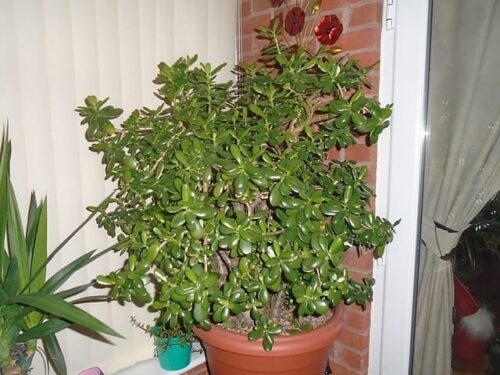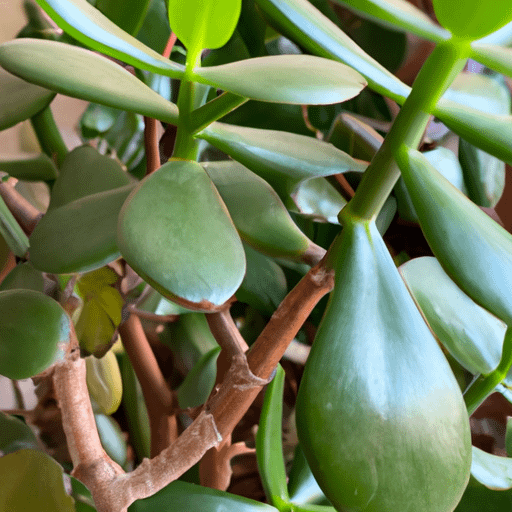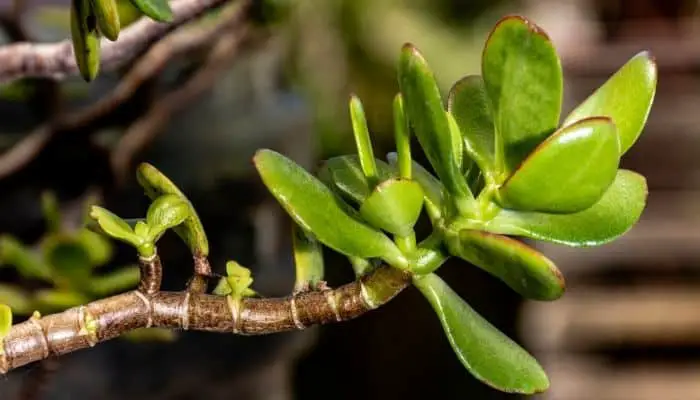Why Your Jade Tree is Losing its Luster
The Mysterious Case of Falling Leaves
Jade tree owners often face the distressing issue of jade tree leaves falling off, which can be a frustrating and concerning experience. The sudden loss of foliage can leave the plant looking bare and unhealthy, prompting questions about the cause of this problem. It’s essential to identify the underlying reasons behind jade tree leaves falling off to prevent further damage and ensure the long-term health of the plant. By understanding the root causes of this issue, you can take corrective action to restore your jade tree’s natural beauty and promote healthy growth.
Common Causes of Leaf Drop in Jade Trees
When it comes to jade tree leaves falling off, there are several common culprits to blame. Overwatering is a frequent mistake that can cause roots to rot, leading to leaf drop. On the other hand, underwatering can also cause stress to the plant, resulting in leaf loss. Temperature fluctuations can also play a role, as jade trees prefer consistent temperatures between 65-75°F (18-24°C). Additionally, pests like spider mites, mealybugs, and scale can infest the plant, causing leaves to fall off. It’s essential to identify the underlying cause of leaf drop to take corrective action and prevent further damage.
How to Diagnose the Problem: A Step-by-Step Guide
To effectively address the issue of jade tree leaves falling off, it’s crucial to diagnose the problem correctly. Here’s a step-by-step guide to help you identify the underlying cause:
1. Inspect the leaves: Examine the fallen leaves for signs of pests, diseases, or nutrient deficiencies. Check for any unusual colors, spots, or holes.
2. Inspect the stems: Look for signs of damage, cracks, or lesions on the stems. Check if the stems are soft and mushy, indicating overwatering.
3. Inspect the soil: Check the soil moisture by sticking your finger into the soil up to the first knuckle. If the soil feels dry, it may be underwatered. If it’s waterlogged, it may be overwatered.
4. Check for pests: Inspect the plant for signs of pests like spider mites, mealybugs, or scale. Look for tiny eggs, webs, or actual pests on the leaves and stems.
5. Check for diseases: Fungal diseases can cause jade tree leaves to fall off. Look for signs of fungal infections like black spots, white powdery patches, or soft, mushy stems.
By following these steps, you can identify the underlying cause of jade tree leaves falling off and take corrective action to prevent further damage.
The Role of Watering in Jade Tree Health
Watering is a critical aspect of jade tree care, and improper watering techniques can lead to jade tree leaves falling off. Overwatering is a common mistake that can cause roots to rot, leading to leaf drop. On the other hand, underwatering can cause stress to the plant, resulting in leaf loss. It’s essential to find a balance between the two.
To water your jade tree correctly, make sure to check the soil moisture by sticking your finger into the soil up to the first knuckle. If the soil feels dry, it’s time to water. Water your jade tree thoroughly, making sure the pot drains well to prevent waterlogged soil. Avoid getting water on the leaves to prevent fungal diseases.
It’s also important to adjust your watering schedule according to the season. During the spring and summer months, jade trees require more water due to increased growth. During the fall and winter months, reduce watering to once a month, as the plant is dormant.
By following these watering tips, you can prevent jade tree leaves from falling off due to improper watering. Remember, it’s always better to err on the side of caution and underwater slightly than to overwater your jade tree.
Nutrient Deficiencies and Jade Tree Leaf Loss
Nutrient deficiencies are a common cause of jade tree leaves falling off. Jade trees require a balanced diet of essential nutrients to maintain healthy growth and prevent leaf loss. A lack of nutrients can cause stress to the plant, leading to leaf drop.
The most common nutrient deficiencies that can cause jade tree leaves to fall off include nitrogen, iron, and magnesium. Nitrogen deficiency can cause yellowing of the leaves, while iron deficiency can cause yellowing or whitening of the leaves. Magnesium deficiency can cause yellowing of the leaves and stunt growth.
To prevent nutrient deficiencies, it’s essential to fertilize your jade tree regularly. Choose a balanced fertilizer that contains nitrogen, phosphorus, and potassium (NPK). A 20-20-20 NPK fertilizer is a good starting point. You can also consider using a fertilizer specifically formulated for cacti and succulents, as they have different nutrient requirements.
When fertilizing, make sure to follow the instructions on the label and avoid overfertilizing. Overfertilization can cause more harm than good, leading to jade tree leaves falling off. It’s also important to fertilize during the growing season (spring and summer) and reduce fertilization during the dormant season (fall and winter).
By providing your jade tree with the necessary nutrients, you can prevent leaf loss and promote healthy growth. Remember, a balanced diet is essential for maintaining a healthy and thriving jade tree.
Pest Control and Disease Prevention
Pests and diseases are common culprits behind jade tree leaves falling off. If left unchecked, these issues can cause significant damage to the plant and lead to further leaf loss. It’s essential to monitor your jade tree regularly for signs of pests or diseases and take prompt action to address any issues that arise.
Common pests that affect jade trees include mealybugs, spider mites, and scale. These pests can cause damage to the leaves and stems, leading to leaf drop. To manage pests, inspect your jade tree regularly and treat any infestations promptly. Use insecticidal soap or neem oil to control pest populations.
Diseases such as root rot, leaf spot, and powdery mildew can also cause jade tree leaves to fall off. These diseases are often caused by overwatering, poor air circulation, and high humidity. To prevent diseases, ensure good air circulation around your jade tree, avoid overwatering, and remove any infected leaves or stems.
Preventing pest and disease issues is key to maintaining a healthy jade tree. Regularly inspect your plant, and take prompt action to address any issues that arise. By doing so, you can prevent jade tree leaves from falling off and promote healthy growth.
Remember, a healthy jade tree is better equipped to withstand pest and disease issues. By providing optimal care, including proper watering, fertilization, and pruning, you can help your jade tree thrive and reduce the risk of pest and disease issues.
Environmental Factors Affecting Jade Tree Health
Environmental factors play a significant role in the health of your jade tree, and can contribute to jade tree leaves falling off if not optimal. Temperature, humidity, and light are three key environmental factors that can impact your jade tree’s health.
Temperature fluctuations can cause stress to your jade tree, leading to leaf drop. Jade trees prefer temperatures between 65-75°F (18-24°C) during the day and no lower than 55°F (13°C) at night. Avoid placing your jade tree near heating or cooling vents, fireplaces, or drafty windows.
Humidity is another important environmental factor to consider. Jade trees prefer a relatively low humidity environment, around 40-50%. High humidity can lead to root rot and other diseases, causing jade tree leaves to fall off. You can use a humidifier or group plants together to maintain a healthy humidity level.
Light is essential for jade tree health, but too much or too little light can cause problems. Jade trees prefer bright, indirect light, but direct sunlight can cause leaf scorch and lead to jade tree leaves falling off. East- or west-facing windows are ideal for jade trees.
To create an optimal environment for your jade tree, consider the following tips: place your jade tree in a spot with bright, indirect light; maintain a consistent temperature between 65-75°F (18-24°C); and keep the humidity level around 40-50%. By doing so, you can prevent jade tree leaves from falling off and promote healthy growth.
By understanding the impact of environmental factors on jade tree health, you can take steps to create an optimal environment for your plant. Remember, a healthy jade tree is better equipped to withstand environmental stressors and prevent jade tree leaves from falling off.
Reviving Your Jade Tree: Tips for Recovery
If your jade tree has lost its leaves, don’t worry – it’s not a lost cause. With proper care and attention, you can revive your jade tree and promote healthy growth. Here are some tips to help your jade tree recover from leaf loss.
Pruning is an essential step in reviving your jade tree. Remove any dead or damaged leaves and stems to prevent the spread of disease and encourage new growth. Use clean, sharp pruning tools to avoid spreading disease.
Repotting your jade tree can also help it recover from leaf loss. If the soil is depleted of nutrients or waterlogged, repotting your jade tree in fresh, well-draining soil can provide a much-needed boost. Choose a pot that is only slightly larger than the previous one to prevent the soil from becoming too wet.
Provide optimal care to your jade tree by ensuring it receives the right amount of water, light, and nutrients. Water your jade tree sparingly, as it’s prone to root rot if the soil is too moist. Provide bright, indirect light, and fertilize your jade tree during the growing season with a balanced fertilizer.
To prevent jade tree leaves from falling off in the future, make sure to monitor your plant’s health regularly. Check for signs of pests or diseases, and take prompt action if you notice any issues. By providing optimal care and attention, you can prevent jade tree leaves from falling off and promote healthy growth.
Remember, reviving a jade tree that has lost its leaves takes time and patience. With proper care and attention, your jade tree can recover and thrive once again. By following these tips, you can help your jade tree regain its luster and prevent jade tree leaves from falling off in the future.









